Create and Edit Block Mask Icon
Create block mask icon using Graphical Icon Editor and Mask Drawing commands. You can toggle between the two modes from Mask Editor. This example shows how to draw a block icon with the following features using the Graphical Icon Editor.
The icon has the elements as shown in the following image.
Depending on the value of the block parameter
FieldType, the permanent magnet or the spring is visible on the icon.The text that appears in the center of the icon takes the value of the block parameter
CenterTextdefined in the Mask Editor.
![]()
To create the block icon:
Add a Subsystem block. To create mask on the block, right-click the block, then select Mask > Create Mask.
In the Icon tab, click Drawing Commands and select Graphical.
Draw the icon.
Select Rect from the drawing tools and draw a square. A new part is created in the Element Browser. Click
 to pin this part to make it the base part of the
block mask icon. The elements in the base part appear in all other parts, reducing
the need to replicate icon elements.
to pin this part to make it the base part of the
block mask icon. The elements in the base part appear in all other parts, reducing
the need to replicate icon elements.Note
Enable the Grid and Snap to grid options in the toolstrip to precisely align shapes with each other.
Select Line from the drawing tools to draw a horizontal line touching the middle of the square.
Note
Enable the Rulers and Smart Guides options in the toolstrip to align the element relative to other elements in the canvas.
Select the square and line elements and make a copy of them. Select the elements, right-click and select Group to group the square and the line. Select Flip Horizontal from the toolstrip to flip the copies horizontally.
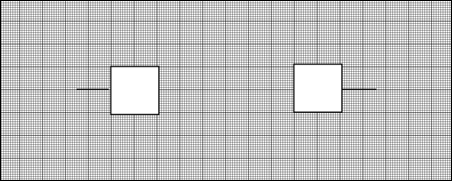
Select Ellipse to draw a circle joining the two squares.
In the toolstrip, click Ports and then specify Left as
2and Right as2for specifying the number of ports.Use the Text tool to add the text element
DC Machinein the center of the icon.Click
 to create an another part for the bar magnet. Select
Rect and draw a rectangle. Make a copy of the rectangle and
place the rectangles next to each other. Use the Text tool to
add the text element
to create an another part for the bar magnet. Select
Rect and draw a rectangle. Make a copy of the rectangle and
place the rectangles next to each other. Use the Text tool to
add the text element NandS. Fill the left rectangle with black color.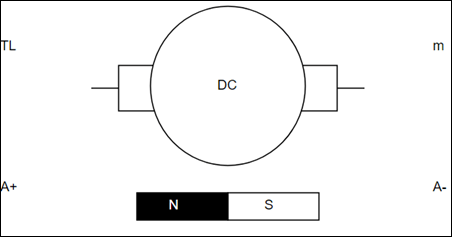
Click
 to create an another part for the spring element. Select
Inductor and place it on the canvas. Flip the inductor
element vertically. Adjust the edit points of the inductor element to form the loops
of the spring.
to create an another part for the spring element. Select
Inductor and place it on the canvas. Flip the inductor
element vertically. Adjust the edit points of the inductor element to form the loops
of the spring.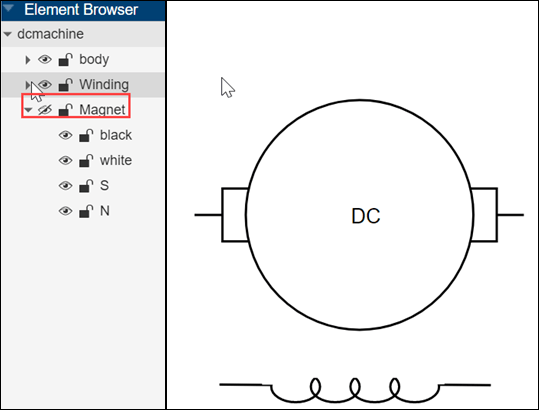
Note
You can rename the elements in the Element Browser for easy identification.
Bind ports to the icon.
Enter the labels for the left and right ports using the text tool.
Bind the ports and port labels of the icon to align the port labels to the port in the canvas so that even when you resize the icon the ports and port labels remain together. To bind the port to the port labels, select the port label, then in the Port Binding section of the toolstrip, select the port. You can also unbind the port.
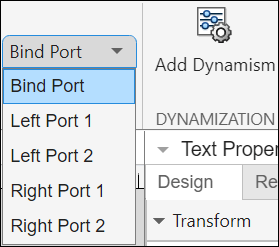
Hide or unhide spring and magnet elements based on the block parameter condition.
Configure the spring element to be visible when the
FieldTypeparameter isWoundand the magnet element to be visible when theFieldTypeparameter isPermanent magnet. Create a Popup parameter in the Mask Editor namedFieldType. Specify the options asPermanent magnetandWound.
Right-click the magnet element and select Conditional Visibility > Add Condition.
In the Icon Dynamization pane, click Graphical. From the Condition Type list, select
Block Parameters. Select the parameter asFieldType, the condition asEqual toand the value asPermanent magnet. Click Apply to populate the visibility condition.
Set the magnet element to be visible when
FieldTypeisWoundin a similar way.
Create a text label that appears in the center of the icon..
Define the block mask parameter
CenterTextin the Mask Editor.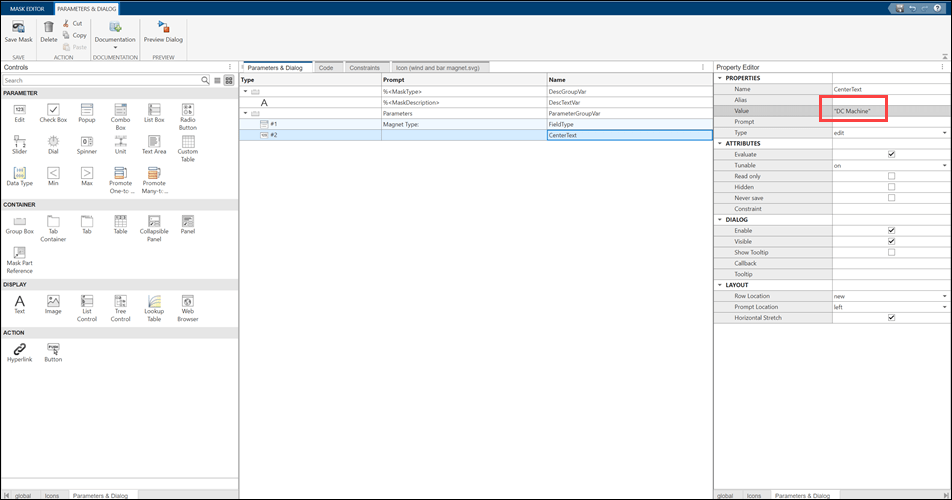
Select the part that holds the text element and then select the text element. In the Text Dynamization pane, select the Text tab.
Enter the mask block parameter name
CenterTextin Parameter/Value.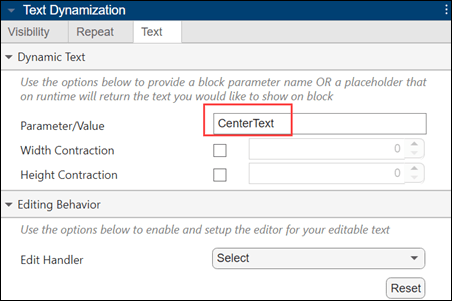
Parameter/Value returns its value during run time.
Click Save Mask to save the mask. Mask Editor also allows you to save the icon separately as an
SVGfile.Click Preview in Model from the toolstrip to preview the icon on the Simulink® canvas.
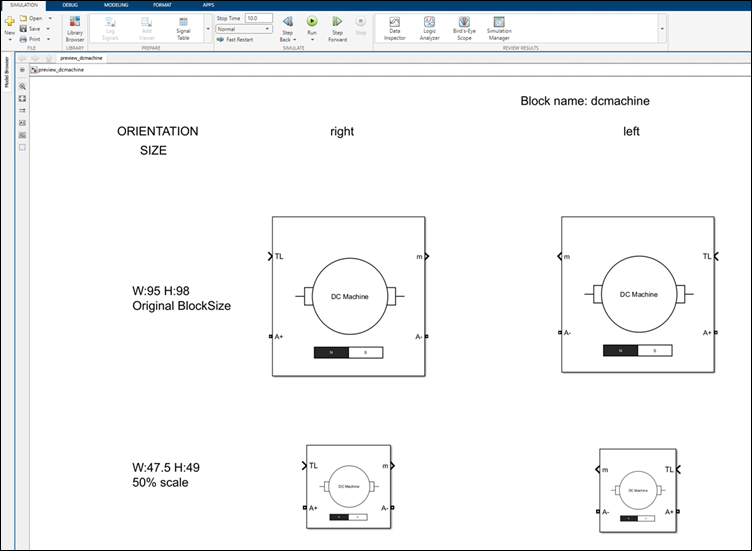
Note
If you have changes in both Command Editor and Graphical Editor, you can save the changes in either one of the modes.